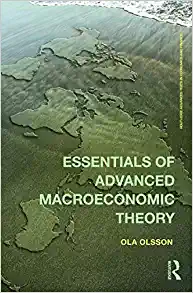

Hi i will appreciate solutions to this questions thank you
2. Consider a homogeneous-product market where inverse demand is given by P=46-20 and the per-period cost function is C = 2q+32. The market lasts two periods and then it obliterates. Assume throughout that there is no discounting (i.e. the discount factor is 1). At the moment there is only one firm in the industry and it will be the only firm in period 1. Consider three scenarios. Scenario 1. The firm is protected from entry also in period 2. (a) Determine the firm's output and profits in each period. Scenario 2. There is a potential entrant who is considering entry in period 2 (with the same cost function as the incumbent). The incumbent, when it chooses its output in period 1, can commit to the same output in period 2. The commitment is credible and is observed by the potential entrant. (b) Is it possible for the incumbent to deter entry? (c) Write down the incumbent's total (i.e. for both periods) profit function (taking into account the entry and output decision of the potential entrant). (d) What output does the incumbent choose and what are its total profits? (e) Is there entry in period 2? Scenario 3. There is a potential entrant who is considering entry in period 2 (with the same cost function as the incumbent). The incumbent, when it chooses its output in period 1, cannot commit to the same output in period 2. In fact, the output decision in period 2 is independent of the output decision in period 1. (f) Is it possible for the incumbent to deter entry? (g) What output levels does the incumbent choose in the two periods and what are its total profits? (h) Is there entry in period 2?Section A 1.. Consider a monopolist who produces items at a constant unit cost & and sells these units to retailers who incur zero additional costs (that is, the only cost faced by the retailers is the price paid to the monopolist for each unit). Suppose there are two retailers and they compete in output levels (Cournot competition). Inverse demand is P= a - b Q. (a) Assume that the monopolist uses standard linear pricing. What is the optimal price for the monopolist to set to the retailers? (b) Suppose now that the monopolist uses a two-part tariff scheme, where it charges each retailer a (possibly different) fixed fee, plus a per unit charge (the same for both retailers) for any unit bought. What is an optimal two-part tariff for the monopolist? (c) Which of the two pricing schemes (linear pricing or two-part tariff) does the monopolist prefer? (d) How would your answer to (a)-(c) change if retailers competed in prices (Bertrand competition)? 2. Consider an industry composed of n identical firms producing a homogeneous product. Suppose that & of these firms (with 1 s k










